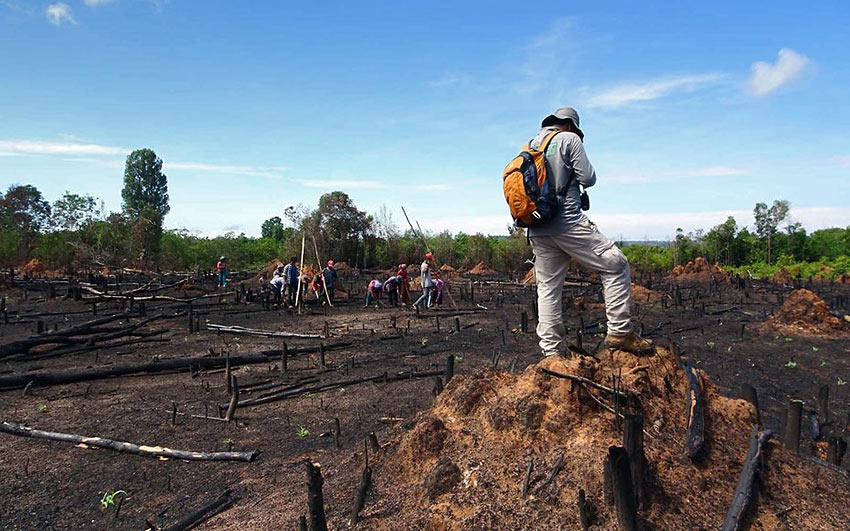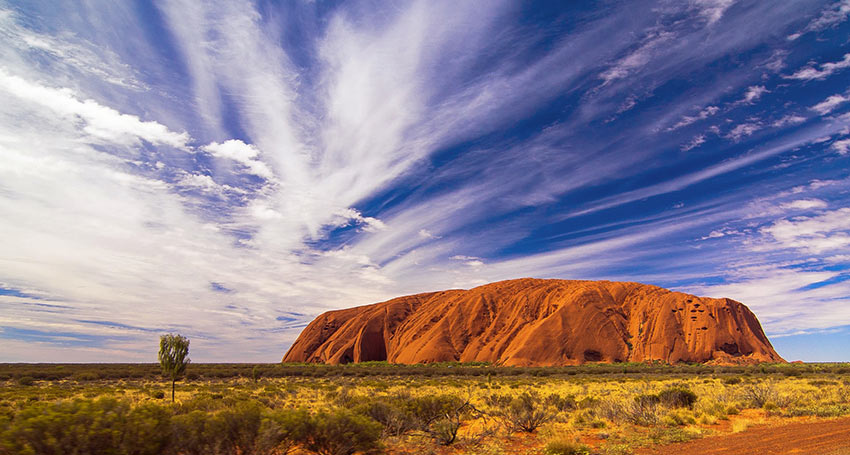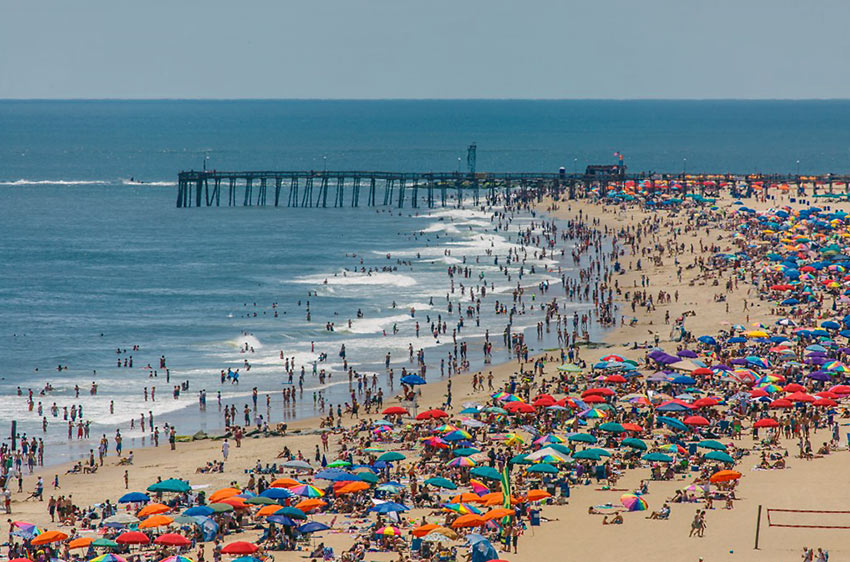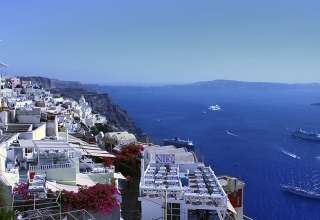Could Nuclear-Powered Ships Help the Industry Meet the 2050 Emissions Target?
Courtesy Lloyd’s Register

Nuclear power as a fuel for ships is a completely zero-emission solution – it does not emit any SOx, NOx, CO2 or particulates. The technology is also millions of times more power-dense than fossil fuels and alternative fuel options that are currently being considered like methanol, ammonia and hydrogen. In terms of meeting the IMO’s 2050 greenhouse gas (GHG) reduction ambition, it’s the only proven solution available today, capable of replacing fossil fuels in all marine applications.
The technology is far from new – the first nuclear power plant became operational in 1955 with the US Navy. Since then, there has been around 700 reactors operational at sea, and currently there are about 100. This equates to thousands of operating years’ experience. The technology is not just limited to navies – there have also been civil marine applications. Russia has been operating nuclear merchant ships for many years. At present this includes nuclear-powered icebreakers with some of these vessels becoming passenger ships in the summer, cruising to the arctic circle. Therefore, it could be argued that on the fringes of the cruise industry there are already nuclear-powered ships operating.
Nuclear power could be a particularly attractive option for the ferry industry, not only due to zero emissions, but also as it removes the need to bunker fuel when embarking/disembarking passengers, which becomes more of a challenge with new fuels. Any future requirements to use shoreside power to limit emissions would be negated by nuclear power. It would even be possible to supply power from the vessel to shoreside as an additional source of revenue. Nuclear is currently excluded from the Energy Efficiency Design Index (EEDI) meaning that there are no constraints in place for ships operating using the technology.
Public perception and acceptance are significant barriers in accepting this technology but are the risks real or perceived? Improved technological development over the years has ensured that fail safe mechanisms are built into reactor designs to negate concerns of radiation leakage in the event of failure. Mutual acceptance across nations for regulatory implementation will have to be in place for adoption to increase.
LR has over 60 years’ experience in providing quality assurance to global land-based nuclear power operators. More recently, LR have been supporting a project in China to develop new Floating Nuclear Power Plants. Our expertise is grounded through our Marine & Offshore services together with our other business streams, Offshore and Energy and Business Assurance & Inspection Services.
In 1966 LR issued ‘Provisional Rules for the Classification of Nuclear Ships’ but these were since withdrawn – however, in 2010, following interest in the technology from several clients, we developed a framework of principles to be considered when exploring the use of nuclear. Through this goal-based approach LR can help our clients assure the design, construction and operation of nuclear-powered ships.
Festival of Life and Death Traditions in Riviera Maya
Courtesy TravelPulse

Day of the Dead, or Día de Muertos, is a holiday celebrated all throughout Mexico where living people honor the dead, giving the spirits of friends and ancestors who have passed on offerings including both food and drinks.
This year it takes place from October 30 to November 2, and the guest of honor is the Mexican state of San Luis Potosí. This will be Grupo Xcaret’s fourteenth annual Day of the Dead celebration.
Artists from Mexico, Spain and Peru will be in attendance putting on theater plays and concerts, and performances will be held at both Hotel Xcaret Mexico and Xcaret Park. Visitors staying at the resort have the opportunity to join in on the fun at either the hotel or at the park.
In addition to shows and concerts, there will also be interactive workshops, exhibitions and several opportunities for children and adults to learn all about the Day of the Dead celebration and all the traditions that go along with it.
Traditional food will also be readily available for guests to enjoy including enchiladas, gorditas, tamales, various desserts and more. Visitors staying at the resort during this event will have an experience of a lifetime.
Click here to learn more.
Ancient ‘Lost City’ of the Khmer Empire Discovered in Cambodia
Courtesy Jessie Yeung, CNN
Researchers have identified the elusive ancient “lost city” of Cambodia for the first time.

Mahendraparvata was one of the first capitals in the Khmer Empire, which lasted from the 9th to 15th centuries AD, but much of what we know come from inscriptions recovered from other sites. Scientists theorized that the city was located on the Phnom Kulen plateau, about 48 kilometers (about 30 miles) north of Siem Reap, but it was difficult to find evidence. The plateau was remote, inaccessible, covered with vegetation, and potentially home to landmines installed by the Khmer Rouge regime in the 1970s.
Shrouded in mystery for decades, Mahendraparvata has been dubbed the “lost city.” Now, scientists say they have identified it for certain.
“Here, we confirm the hypothesis, based on this accumulated body of evidence, that Mahendraparvata – the eighth- to ninth-century AD capital of the Khmer Empire – was located on the Phnom Kulen massif,” said the report, which was published in the journal Antiquity.
The researchers used airborne laser scanning that had a “unique ability to ‘see through’ vegetation and provide high-resolution models of the forest floor,” the report said.
They had to map the area in two separate operations – first in 2012, covering about 37 square kilometers (about 9,143 acres), and again in 2015, covering the entire mountain range, an area of 975 square kilometers (240,928 acres).
The results of the aerial mapping, along with information collected by field investigations, were then used to create a map that shows the newly discovered main paths and coordinate axes. The map details the location of features like an unfinished reservoir, several dams, the enclosure walls of temples, and even a palace.
These discoveries open the door to learning more about the Khmer Empire and the Angkor region. The map shows that the city used urban planning, a “sophisticated hydraulic system,” and other innovations, the report said.
One striking discovery was that the city was built on linear axes that roughly correspond with the cardinal directions, the report said – like an early version of the modern city grid system.
Prior to that period of time, human settlements in the area had no formal grid, no clear boundaries, and seem to have developed organically without planning – meaning Mahendraparvata is the first known large grid city in the Khmer world.
“The work described here effectively draws to a close 150 years of archaeological mapping work in the Greater Angkor region and sets the stage for more sophisticated spatio-temporal modelling of urban form,” the report said.
Angkor was the better-known capital of the Khmer Empire, which once governed much of modern-day Thailand, Vietnam, and Laos as well as parts of southern China and Myanmar, and, of course, Cambodia itself.
Americans Reveal What Makes a ‘Good Tourist’
Going abroad provides the perfect opportunity to relax and get away from the responsibilities/stresses of everyday life. Set in vacation mode, many people sometimes forget that they are a guest in another country and therefore, fail to ensure their behavior as well as actions are always respectful towards the visiting destinations local culture/customs.
A recent study by market research firm YouGov found that 27% of Americans have a negative view of their own travellers (i.e. American tourists) when they are in other countries.
Interested in the travelers behavior/actions, holiday transfers specialists Taxi2Airport.com surveyed 1,822 Americans to discover the traits they most associate with being a ‘good tourist’.
The Traits Americans Most Associate with Being a ‘Good Tourist’
| Leaning a few basic words/phrases in local language (e.g. hello, thank you etc.) |
79%
|
| Not talking about sensitive topics in public (e.g. political/economic issues etc.) |
72%
|
| Controlled alcohol consumption |
69%
|
| Dressing respectfully/appropriately |
65%
|
| Leaving a fair tip |
61%
|
| Willingness to try domestic cuisines/eat at local restaurants |
58%
|
| Not littering |
54%
|
| Trying to shop at local stores/buying domestically produced products/souvenirs |
47%
|
| Not haggling unnecessarily |
44%
|
| Not complaining about the price and/or quality of tourist attractions in public |
40%
|
| Attending and/or participating in local festivals/parades |
36%
|
| Open to using public transportation (e.g. local buses, trains, trams etc.) |
23%
|
There’s a Reason Why Last-Chance Tourism Happens, But We Still Need to Talk About It
Highlighting “go before it’s gone” messaging encourages people to visit endangered destinations.
Courtesy JoAnna Haugen, Adventure Travel News

In November 2017, the Associated Press reported that climbing on Uluru, Australia’s sacred monolith rock also known as Ayers Rock, would be banned beginning 26 October 2019. The park’s board made the decision in 2010 to ban the activity if interest declined and visitors were drawn to other activities. According to Parks Australia, only 16% of visitors climbed the rock between 2011 and 2015, a sharp drop from 74% in the 1990s.
Yet, as the date of the ban draws near, a number of news sources including the New York Times and the Guardian have reported tourists are flocking to the site. As noted in both articles, the park saw a 20% increase in visitation due at least in part to more direct flights from Darwin and Adelaide to the region. Nonetheless, headlines for both of these news stories focus specifically on Uluru’s climbing ban as the reason the park has seen a surge in visitation, a phenomena known as last-chance tourism.
Without asking visitors themselves whether Uluru’s imminent closure influenced their decision to climb it now, it’s impossible to correlate the park’s increased visitation numbers with travelers’ motivations. Yet, a 2016 study published in the Journal of Sustainable Tourism found that nearly 70% of visitors questioned about their motivations to visit the Great Barrier Reef were “strongly motivated” to see the Reef “before it’s gone,” so there is evidence destinations’ uncertain futures are a compelling reason for people to visit them. Regardless of whether a specific correlation can be made or not, the spotlight on Uluru and the way popular media has reported on it over the past several months highlights the growing phenomenon of last-chance tourism and how reducing a destination into alarmist sound bytes by popular and social media can have adverse consequences.
Ultimately, it doesn’t matter why a destination or site is at risk of destruction or closure, but publicizing its demise triggers a psychological desire to visit. Yet, not openly discussing solutions to mitigate threats to endangered destinations around the globe is ignorant at best and dangerous at worst. To understand how to bring awareness to and discuss what is happening to endangered destinations, it’s important to understand what is driving the last-chance tourism trend.
Last-Chance Tourism: Not a New Industry Trend
In August 2010, a study published in Current Issues in Tourism noted concerns over vanishing destinations including the Great Barrier Reef, Everglades, Maldives, Galapagos Islands, the ice cap on Mt. Kilimanjaro, and the polar regions prompted some tour operators and agencies to recommend that travelers visit these destinations before they disappear. These concerns date back well over a decade, yet it’s become a mainstream trend running parallel with the climate crisis over the last couple years.
The desire to visit, see, and experience a place at risk of vanishing has compelling social and psychological roots, yet participating in last-chance tourism can perpetuate the very conditions that led to the destination’s tenuous condition in the first place.
Overtourism + Last-Chance Tourism: A Destructive Duo
By now, it’s old news that overtourism is a global problem. In fact, many destinations have closed or restricted access in order to manage the overwhelming number of tourists that crowd beaches, city streets, and historical sites. Earlier this year, Peru implemented a four-hour visitation limit to Machu Picchu. Thailand’s Maya Bay and Boracay Island in the Philippines both closed to visitors to help the destinations recover from overtourism’s effects. And city destinations like Venice, Rome, and Amsterdam have implemented visitation fees, stricter laws, and management strategies to address structural and cultural damage and tourists’ inappropriate behavior.

Some of these destinations are also bumping into the last-chance tourism trend. Venice, for example, is expected to succumb to flooding before 2100 due to global warming, as are many other coastal destinations. At Machu Picchu, visitors were recently given limited access to areas of the sacred site to curb degradation due to human foot traffic. It’s bad enough that travelers seek these destinations out during these particularly sensitive and strained final days. Perhaps more unfortunate is that cruise companies, popular media, travel vendors, and tour operators contribute to the problem by packaging these destinations and experiences by marketing their precarious future as a reason to visit now.
For example, Stride Travel, a JetBlue Ventures-backed multi-day travel and tour marketplace, recently curated more than 400 trips in a specific category called “Places Disappearing Due to Climate Change.” These trips each visit one of the 10 destinations it has decided are critically threatened by climate change, which include Greenland, the Dead Sea, Patagonia, and the Great Barrier Reef. In communication with the company, I was assured only destinations impacted by “macro factors” like global warming were included on the list and not those impacted by overtourism, yet Venice also made the list. Stride notes it “takes a stand for responsible travel” by committing 10% of its net revenue to organizations helping to mitigate climate change in these destinations and across the world from eligible trips reserved on this list when travelers opt-in.
“The reality is that people aren’t going to stop traveling — human curiosity and the urge to explore is innate, and we think it should not be stifled, but we also know there are ways to travel sustainably and give back while doing so, said Stride Travel’s founder and CEO, Gavin Delany. “As part of the climate change awareness and Stride Gives Back program, we provide icons on our website to inform travelers looking for trips that visit places that are negatively impacted by climate change, which can be an important part of the decision for some travelers. It’s a subtle but ongoing and influential reminder of the importance of climate change and its effects.”
Why Does Last-Chance Tourism Work?
Stride Travel is not alone in taking advantage of the last-chance tourism trend. Eager to rise to the top of Google’s rankings, many top-tier publications have published lists of places to visit before they disappear as well. But there’s a reason these lists are appealing and tours touting “last-chance” experiences sell.
An explanation of why last-chance framing works can be linked to the psychological phenomenon known as loss aversion. It is associated with people’s fear of missing out or losing something — in this case, the chance to visit a certain place of interest. “Loss aversion is a very powerful mechanism that can strongly influence people’s decision making. It makes people twice as likely to travel to a place that might be disappearing or might be put out of reach compared to a place where they are making a positive impact with their trip,” said Milena Nikolova, the Adventure Travel Trade Association’s (ATTA) director of knowledge and AdventureEDU. “Loss aversion is so powerful that it is often woven into nudges designed to help patients follow their medical treatment or facilitate more responsible financial behavior.”
Psychologically, people react more strongly to a situation when there’s a risk of loss than when there’s a chance for gain. In a lab setting, this means people would rather not lose five dollars than gain five dollars. In the travel industry, this means people would rather visit a place they might not have the chance to visit in the future rather than visit a destination that is equivalent in essentially all other ways except for the fact that it is not in immediate danger of disappearing.
Given this psychological pull, perhaps it’s no surprise that “go before it’s gone” messaging is particularly effective. However, there’s also an unintended effect for those trying to use counter-messaging — that is, don’t visit because this destination is disappearing.
For example, Fodor’s publishes an annual “no” list that advises travelers to avoid particular places for various reasons in the coming year. Phang Nga Park, Thailand, and the Great Wall of China made the list in 2018. Fodor’s included Boracay, Maya Beach, and “places that don’t want you to visit” due to overcrowding, such as Amsterdam, Venice, Santorini, and Dubrovnik, on its 2019 list. While mindful travelers might take these words and warnings to heart, many others don’t view themselves as the ones “causing” the problems with which these destinations struggle. Instead, drawing attention to these destinations puts a target on them as “must visit” destinations before they become “too ruined” to visit. It also adds a sense of urgency so an increased number of people want to visit right away, which artificially fuels overcrowding.
Talking About The Problem
Avoiding conversations about overtourism and destinations in dire straits is irresponsible. These are urgent and important issues the travel and tourism industry needs to take seriously, but how can we talk about destinations suffering from last-chance tourism without doing more harm?
Those working in the travel and tourism industry and popular media are in a powerful position to take a stance when it comes to last-chance tourism. Talking about the phenomenon and the damage it causes to the environment and local communities helps establish the practice as an undesirable social norm. With this negative stigma of last-chance tourism established, destinations are empowered to prohibit or curb tourism, and tourists are both unable and disinterested in being associated with it.
If it sounds unrealistic to turn the tide of travelers back from Uluru, the Great Barrier Reef, and other endangered sites, consider a similar example of visiting establishments where animals are held in captivity or used in touristic activities. Not so long ago, it was considered acceptable to swim with dolphins, visit petting zoos, and ride elephants. Spreading awareness and education about the danger these establishments and activities present has led to a massive backlash to this kind of traveler experience. Many tour companies now refuse to work with companies offering these experiences, and even TripAdvisor has removed activities that put marine wildlife in danger.
The same thing can happen with last-chance tourism. Instead of taking advantage of increased interest due to destinations’ fragile circumstances, the industry needs to be vocal about why taking advantage is wrong. Those working in the industry need to set the standards of right and wrong, and emphasize this until it becomes common practice and universally accepted. Travel professionals everywhere need to talk about last-chance tourism not as an opportunity to “go before it’s gone,” but to make clear why it is irresponsible and dangerous for people to do so. Not doing so may result in irreversible damage to precarious destinations around the world.














